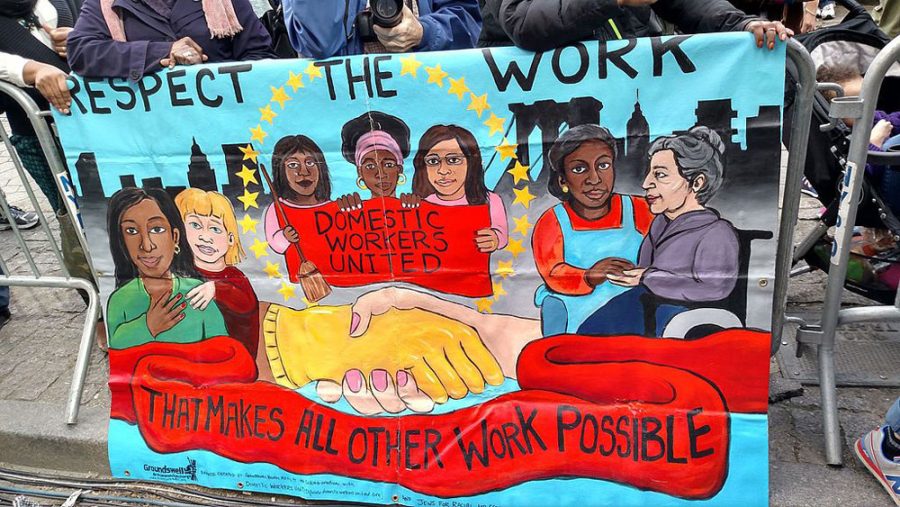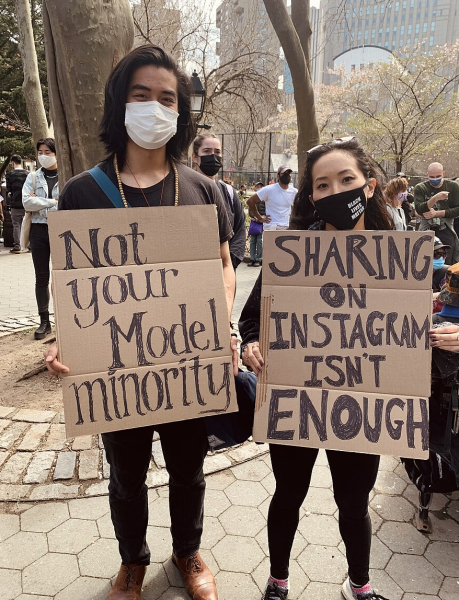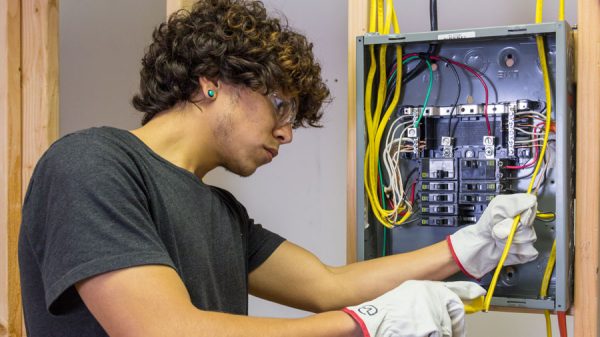Reframing the work force to support marginalized employees
The case for reviewing how we employ and treat minority demographics in the work place
Photo courtesy of nonprofitquarterly.org
Domestic and temporary work — much of which us made up of minority workers — need to be restructured to better protect workers’ rights
April 8, 2022
In front of me, in a line at a food court in the mall, is a woman making a scene about how the employees got her order wrong. She is flailing her arms and shouting about how “this isn’t what she ordered” and is demanding a refund. As I turn to look at the employees, many of whom are dark skinned, they begin frantically talking to each other in another language. It is clear that there was a misunderstanding, in either entering the order or reading it. Upon hearing the employees use a non-native language, the woman loses it; she curses, she gets louder and points to the ignorance of the employees. In the end she gets her refund.
Where does the blame reside in this situation? On the employees, for their misunderstanding? Or with the woman, for her reaction?
If the video was posted on social media, the woman would be called a “Karen.” Perhaps rightfully so; the utilization of a non-English language is what set her off, which implies that she could be, like many “Karens,” small-minded and bigoted. Whatever the employees were talking about should not have changed how the woman reacted, because there is a difference between calling someone out respectfully and screaming at the top of your lungs.
These employees could have been citizens of the United States, or they could have been immigrants who have been in the country for some time. The woman, however, made the immediate assumption that they were foreigners who were here screwing everything up. Wherever the employees behind the counter likely face the same level of discrimination and bigotry from many patrons — far more than white Americans.
Immigrants in particular have long faced a number of hurdles, many that became exacerbated as a result of current social and political events. Unlike U.S.-born workers, immigrants were hit harder at the beginning of the pandemic. According to the Pew Research Center, “they entered the pandemic on the same footing as U.S.-born workers but saw their unemployment rate increase more sharply with the onset of the COVID-19 recession.”
Immigrants tend to be more vulnerable during recessions because they are less likely to have attended college and many of them are unauthorized residents. During the pandemic, women’s unemployment rates peaked higher than men’s. Immigrant women are more likely to work in the leisure, hospitality and other service sectors—also a liability in the pandemic as social distancing rules had a severe impact on those businesses.” The Pew Research Center points to the fact that “As of the second quarter of 2021, the unemployment rate for immigrant women (6.5%) was greater than the rate for U.S.-born women (5.4%), but the gap was no greater than in the pre-COVID-19 period.”
Our country’s legacy of racism and sexism has stained the history of domestic work and care work for many demographics who typically occupy these kinds of jobs. The National Labor Relations Act (NRLA) was passed in 1935, giving workers the right to organize into trade unions and take collective action, such as strikes. Not all workers were offered these rights, as domestic farmers and farm workers (positions typically held by minority men and women) were purposefully excluded as part of a compromise in order to pass the NLRA. Democrats in the South feared that allowing domestic farmers and farm workers to unionize would give Black workers too much economic and political freedom.
“We’ve seen how this legacy affects care work today: low pay, no benefits, and it’s often illegal to unionize. In addition to their lack of labor protections, these workers’ social standing makes them even more susceptible to abuse at work, including wage theft and sexual harassment or assault,” says Mindy Isser from Workplace Fairness, a non-profit that supports marginalized voices in employment issues, as the vast majority of domestic and care workers are women of color, many of whom are immigrants.
Junior Shem Basquinez is a first-generation American who speaks to the lasting effects of racism and sexism in the workplace.
“Maltreatment of immigrants is sadly fairly common,” she said. “Phrases like ‘Go back to your country’ or some other discriminatory or stereotypical comment are often tossed around. It’s sad to see how entitled people feel, especially those with authority in the workplace, to capitalize on a minuscule difference and use it to justify lower wages, refusing to hire, and harassment. A superiority complex is normalized, and more awareness needs to be brought to underlying workforce discrimination.”
Workplace Fairness calls for a labor movement that’s dedicated to prioritizing care work, because (according to Isser), “a powerful movement of working-class people is the only way we will be able to force the government to both make the economic transitions we need to save our planet, and to improve conditions for care workers.”
Since care work overlaps with so many other social issues—sexism, racism, migration, climate change—focusing on it broadens the support base in support of a movement of workers to transform both the economy and climate.
In truth, movements have proven to be effective before, but the pandemic’s long-term impact on the earnings of workers may not be clear until the labor market has healed more fully, with employment and labor force participation going back to pre-pandemic levels. However, if we overlook the call for a labor movement in response to the COVID-19 pandemic, and our country reaches a tipping point where we are no longer required to wear masks, it’s possible that many other social issues will worsen.












